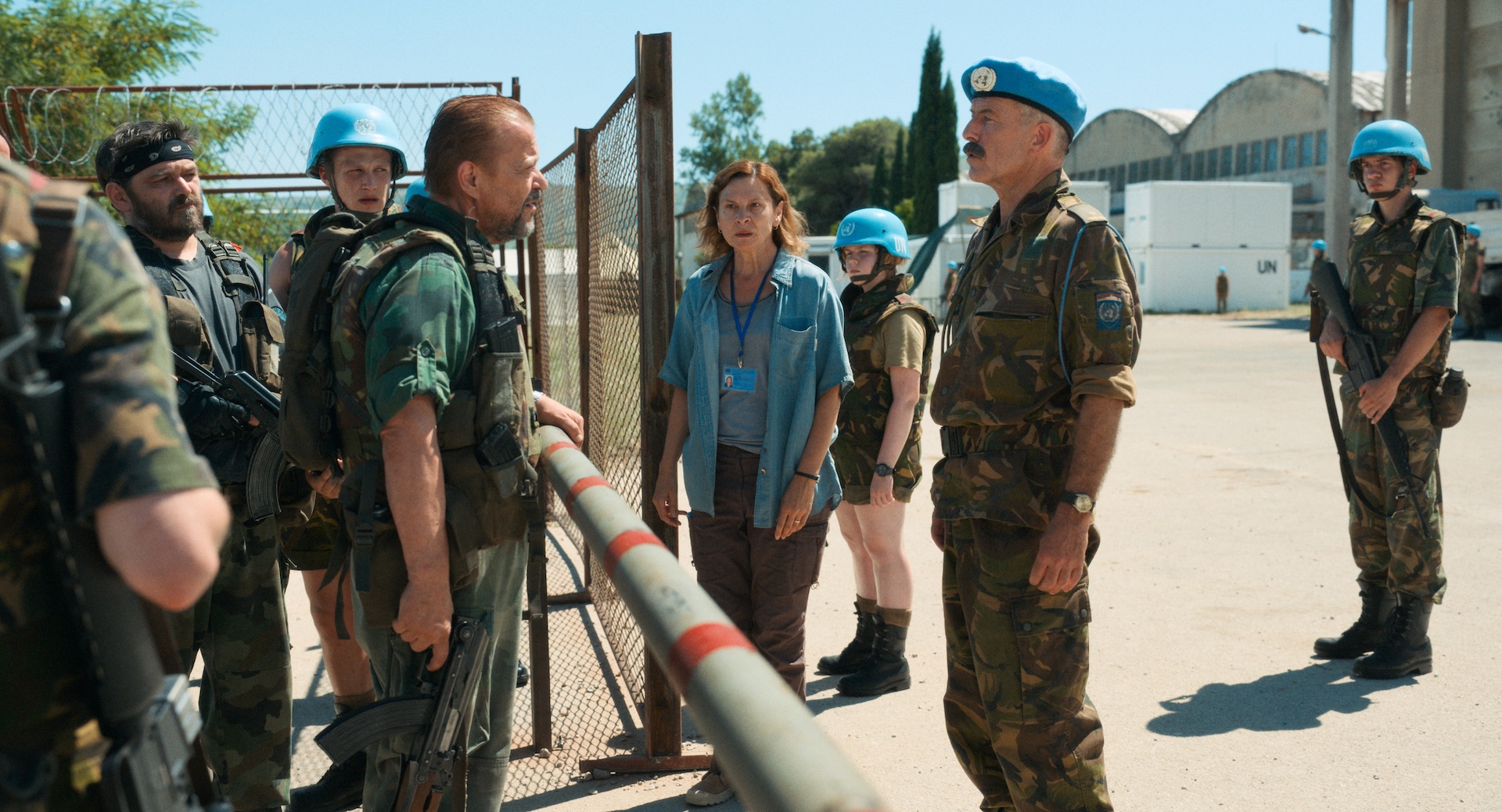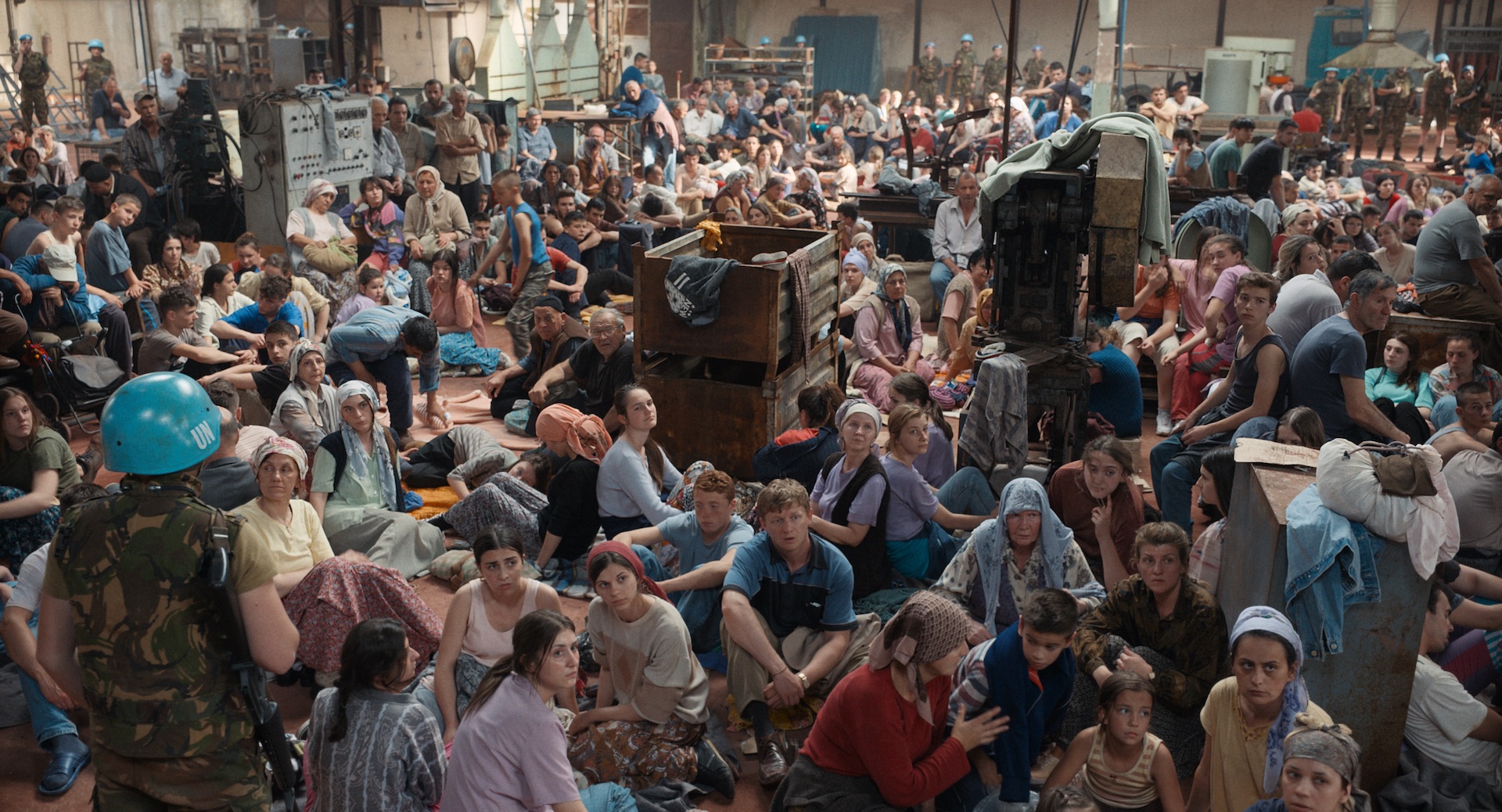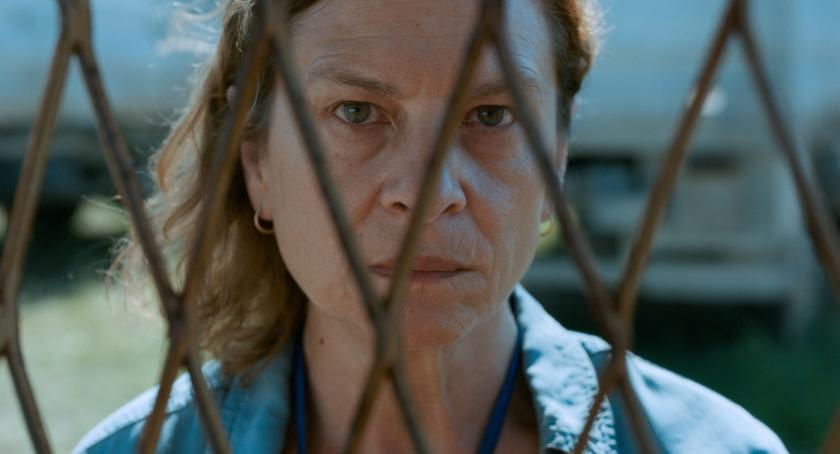Jasmila Žbanić’s latest film, once again about the people of her native Bosnia and Herzegovina, is hardly an easy watch. Focusing on Aida, a passionate and highly capable interpreter for the UN forces in former Yugoslavia, she unflinchingly tells the story of the 1995 massacre of well over 6000 Muslim Bosnian men and boys in the town of Srebrenica. In what was supposedly a safe area under UN guarantee. The town tragically succombed to a genocide for which Radovan Karadžić the prime minister of the Serbian Republic and General Ratko Mladić were directly responsible and later condemned.
Srebrenica was probably the worst (and remains the best-known) case of ethnic cleansing. There have been several documentaries, notably Leslie Woodhead’s excellent feature-length A Cry from the Grave (1999), but Aida’s story and point of view provide a close-up human dimension that takes us right into the heart of a maelstrom of panic, hatred, cruelty and the shameful desertion of a threatened civilian population. The Serbian actor Jasna Duričić brings to her portrayal of the central character a breath-taking range of emotions: the fury of a mother trying to save her two sons, her loving tolerance for a husband who implodes under the horror and stress, her burning frustration and anger at the way in which the well-meaning Dutch UN officers and lower ranks refuse to take a stand or bend the rules.
The film plunges right into the climax of a drama, the tragic outcome of which we already know. This makes it – paradoxically – all the more gripping. We are at the heart of a large scale humanitarian tragedy in which the Muslim population are under threat from the Serbs who have taken over the city. The Dutch are still trying to save lives, and they negotiate with the unbending attackers, led by a terrifying General Mladić and his brutal henchmen. We know, with hindsight, that the massacre to come was planned in advance from Belgrade, and that the discussions were just window-dressing. Colonel Kanemans (played by the Belgian actor Johan Heldenbergh) displays a deeply disquieting mixture of a soldier trying to keep his stiff military bearing, while visibly ready to bend to the ruthless duplicity of the Serbian command.

The writing, shooting, by Austrian cinematographer Christine A. Maier, editing by the Polish editor Jaroslaw Kaminski (who cut both Ida and Cold War by Pavel Pawlikowski) and directing of extras ensure that the disorientation, panic and terror are as tangible as in any action movie – but with a particular sensitivity to the range of human emotions that such a situation engenders. Jasmila Žbanić is an accomplished director: she won the Golden Bear in Berlin in 2006 for Grbavica. The conditions in the factory where several thousands took refuge in the July heat , supposedly under UN protection, were appalling – no food, drink or toilet facilities. While the atmosphere of fear is powerfully evoked, as Aida literally runs from one person to the next trying to get the UN to step up, the grim detail of the horror is barely evoked – the city had been starving for a long period, as the Serbs believed this was a way of slowly killing the Muslims. There was also continuous, brutal and murderous harassment of the further thousands outside, trying to get into the UN base, which the film doesn’t show: the worst kind of atrocities that any bloodthirsty bunch of fanatical soldiers are capable of: multiple rapes, torture, mutilations and murder. It was probably wise to do more with less, drawing us away from in-your-face atrocity, forcing us instead into excruciating intimacy with Aida and her doomed husband and teenage sons.

The strength of the film – as in other of Jasmila Žbanić’s works – lies in the humanity she so skilfully and sensitively evokes. The directing of an excellent and well-cast group of actors is masterful. This isn’t a history lesson but a mirror held up to the worst instincts that are awakened by nationalism, as experienced by one family. There’s no sentimentality here – and soundtrack music is used sparingly rather than manipulatively, and only towards the terrifying climax of the film. Punctuating the almost unbearable horror, the music provides a sombre requiem for the many thousands of civilians, young and old who were machine-gunned to death. Much of the film’s emotional power comes from the alternating of fast cuts, often on the move, with almost reflective still wide shots that are held for longer.
Sentiment does emerge, a little uncomfortably, at the very close of the film: the ambiguity of the last sequence reflects most likely the director’s wish to imagine that reconciliation might possible. Aida has returned to Srebrenica, several years after the bloodbath, and she joins other women who are looking through the exhumed remains of the town’s murdered men. She breaks down. She visits the (probably Serbian) woman who has taken over her family’s former apartment. Later, as she takes up teaching again in the local school, she watches a class of young children perform a singular piece of musical theatre, as they shield and uncover their eyes time and time again. In the final shot of the film Aida gazes at the innocent children, a reminder perhaps of what might be best in humanity. A faint smile breaks out slowly on her sad face. An image of hope? That’s up to us to decide. What seems unavoidable, though is that the conflicts in this part of the world go back for centuries. A tradition of revenge killing makes that hope a little out of tune with the horrors we have witnessed in the rest of the film.














Add comment